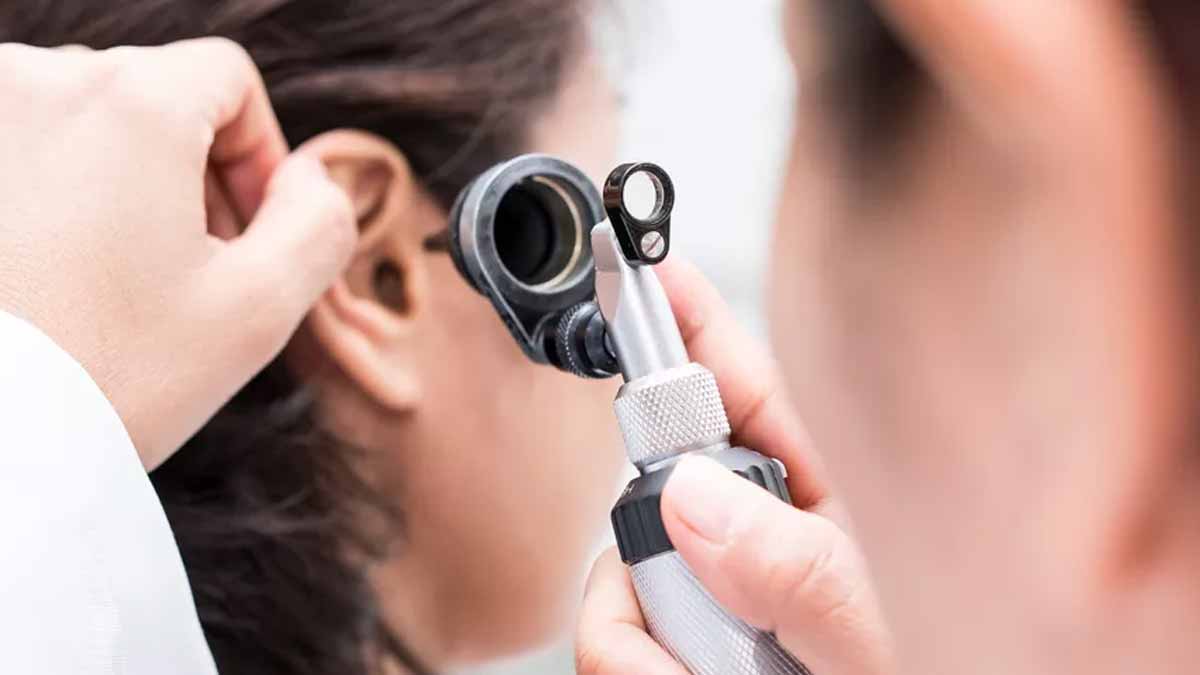A quiet change promises to break lifelong silence for many families. Early results now show that a single-dose gene therapy can rewire the way the ear talks to the brain, and do it quickly. The first improvements arrive within weeks, and life routines begin to shift. The science stays precise, while hopes remain measured. In this context, hearing becomes more than a number on an audiogram; it becomes participation, school progress, and everyday conversation.
What OTOF gene therapy does inside the ear
Mutations in the OTOF gene block production of otoferlin, a protein that helps hair cells hand off sound signals to the auditory nerve. Without it, synapses misfire, and sound never becomes meaning. The therapy supplies a working OTOF copy using an adeno-associated virus vector designed for the inner ear.
Surgeons place the vector through the round window, a thin membrane at the base of the cochlea. This route reaches the fluid spaces while sparing delicate structures, so the dose can remain focused. Because the inner ear is walled off, exposure stays local, and systemic effects remain limited.
The first clinical cohort included ten people with congenital or severe loss tied to OTOF. Ages ranged from one to twenty-four, and the procedures occurred at five hospitals in China. Teams coordinated protocols to standardize imaging, surgery steps, and follow-up testing, so data readouts could be compared fairly. In several cases, hearing behaviors also shifted at home.
Fast gains in hearing after a single-dose vector
Changes showed up early. Within one month, most participants detected softer tones and understood more environmental sounds. Families reported new reactions to voices, doorbells, and music. Auditory brainstem responses sharpened as synapses began passing signals again, which matched the clinical reports from caregivers and staff.
By six months, average sound detection thresholds improved from 106 decibels to 52 decibels. That shift moves people from the range of profound loss toward moderate levels, which reshapes daily needs. Speech therapy then builds on the new access, because brains learn quickly when signals arrive reliably and repeatedly throughout the day.
The single injection mattered for workload and safety planning. One procedure reduces anesthesia exposure and clinic travel, while it also lowers risks tied to repeat entries into the inner ear. Because the round window approach avoids drilling into the cochlea, surgeons preserve anatomy for future options, including devices, if those remain useful later.
Children respond most, adults also improve
Age influenced outcomes, and the window between five and eight years looked best. During that stage, brain circuits still adapt rapidly to new inputs, so benefits scale fast. One seven-year-old girl regained near-complete perception and spoke with her mother four months later, a milestone that changed family routines and school planning.
Adults did not fall outside the reach of benefit. Several teenagers and grown participants improved test scores and daily sound recognition. This is notable, because earlier programs focused only on younger children. The present cohort included adolescents and adults, which expands who may qualify when programs move beyond trial settings.
These data align with how learning works. Brains can adapt across the lifespan, and timely input helps at any age. Therapy restores signals, and then practice turns them into skill. Because daily life supplies constant repetition, progress compounds with time. In parallel, clinics can fine-tune rehab so each person converts new access into function and hearing comfort.
Safety profile linked to immune cells and hearing outcomes
Tolerability remained strong across the cohort. No serious adverse events appeared during the six- to twelve-month follow-up window. The most common lab change was a dip in neutrophil counts, which clinicians monitored and managed without escalation. Because exposure stayed local, systemic symptoms stayed limited and brief.
Inner-ear delivery also reduces infection risk. The round window route avoids creating new bone openings, while sterile technique protects the middle ear. Surgeons relied on imaging and operating microscopes to place the vector precisely. That precision safeguards the cochlea, which keeps delicate hair cells and synapses ready to use the new gene.
Teams coordinated schedules to track healing and performance. Because synaptic rewiring takes time, clinics timed visits to match likely gains. Families learned the signs of progress: new reactions to soft speech, easier localization, and richer environmental awareness. Audiology records then translated those moments into measurable improvements that matched clinical goals.
What comes next : GJB2, TMC1 and broader access
The work does not stop at OTOF. Teams already test vectors for GJB2 and TMC1, two genes behind more common inherited loss. Animal studies look promising, and manufacturing continues to improve. As doses scale, clinics can match vector design to target cells, while they also refine surgical steps to cut variability and speed recovery.
Research groups coordinate across borders. Karolinska Institutet collaborated with Chinese hospitals, including Zhongda Hospital at Southeast University, and published results in Nature Medicine. Funding flowed from national programs and Otovia Therapeutics Inc., the company that built the vector and employs several researchers. Transparency about roles supports trust and clears review hurdles.
Durability now becomes the key question. Teams will watch thresholds, speech scores, and classroom outcomes over years, because long-term function matters most. Registries can map differences by age, genetics, and baseline status. As programs expand, policy work will align training, supply chains, and pricing so more families turn new access into daily hearing gains.
A measured path forward that centers families, data, and real-world change
Lives shift when sound returns and routines adapt to new possibilities. The results here show how a single dose can unlock hearing fast, then practice turns signals into skill. Data stay central as clinics measure thresholds, speech, and participation, while families guide goals. Hope grows, and prudence remains, as follow-up confirms lasting benefit.
